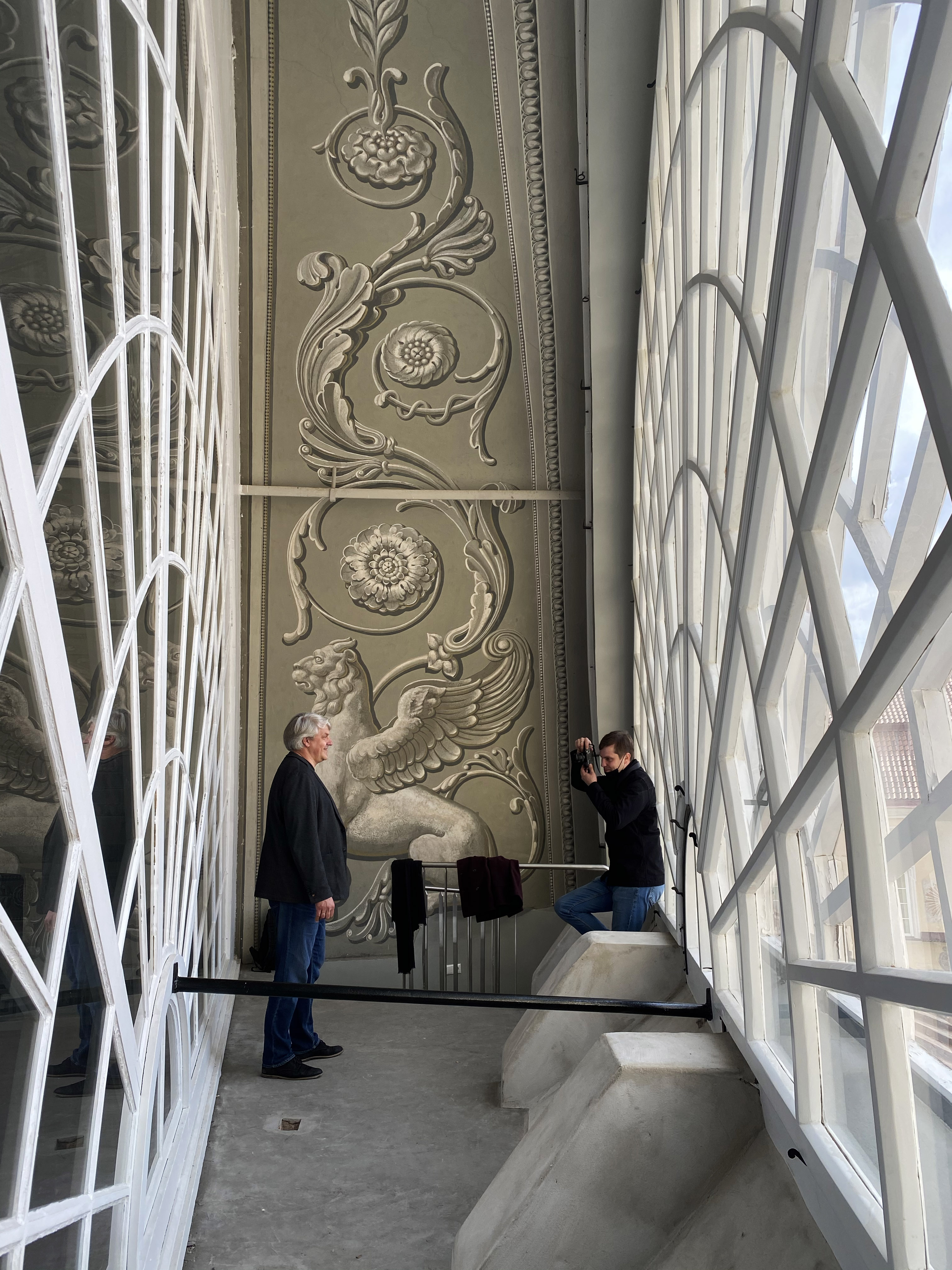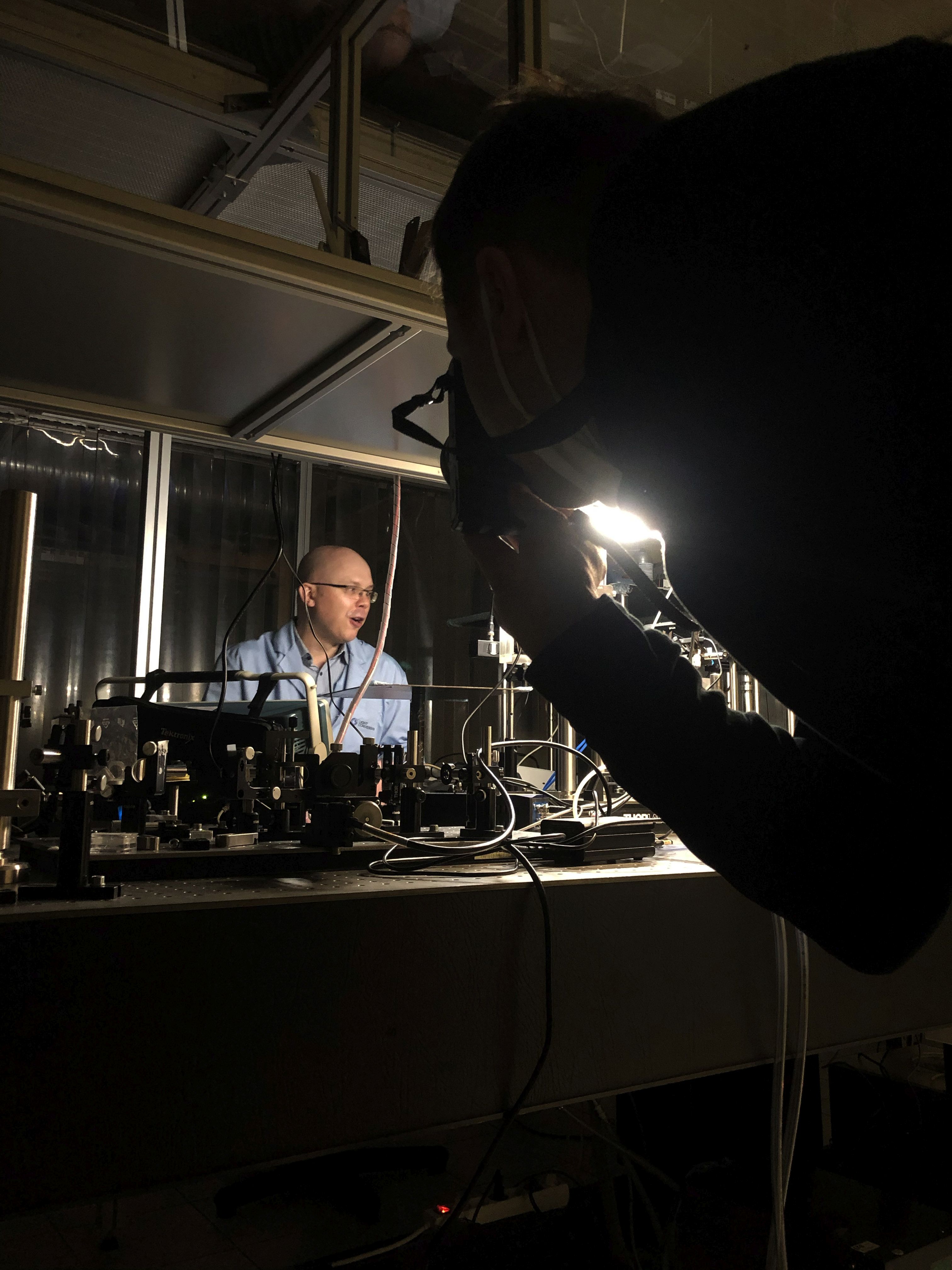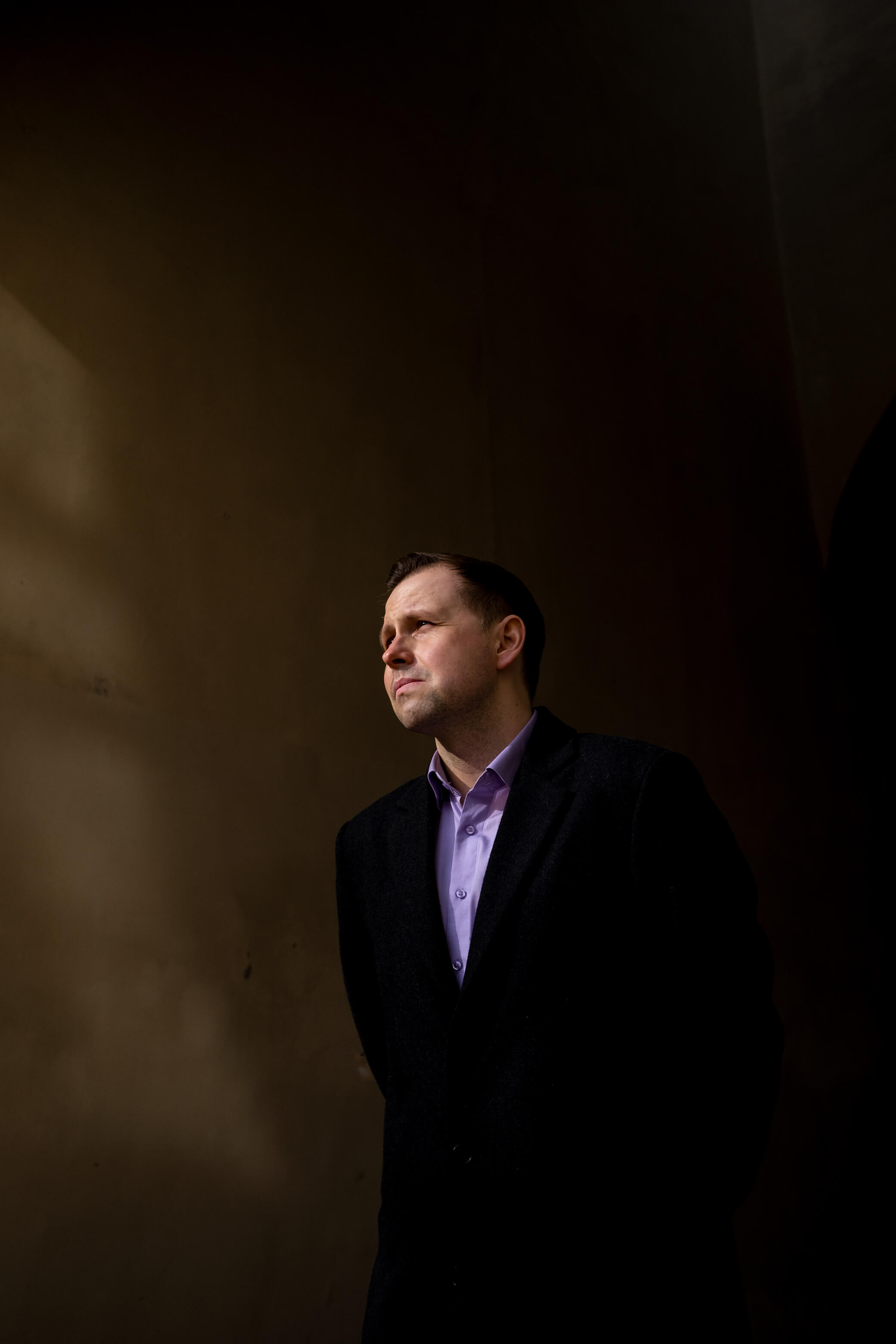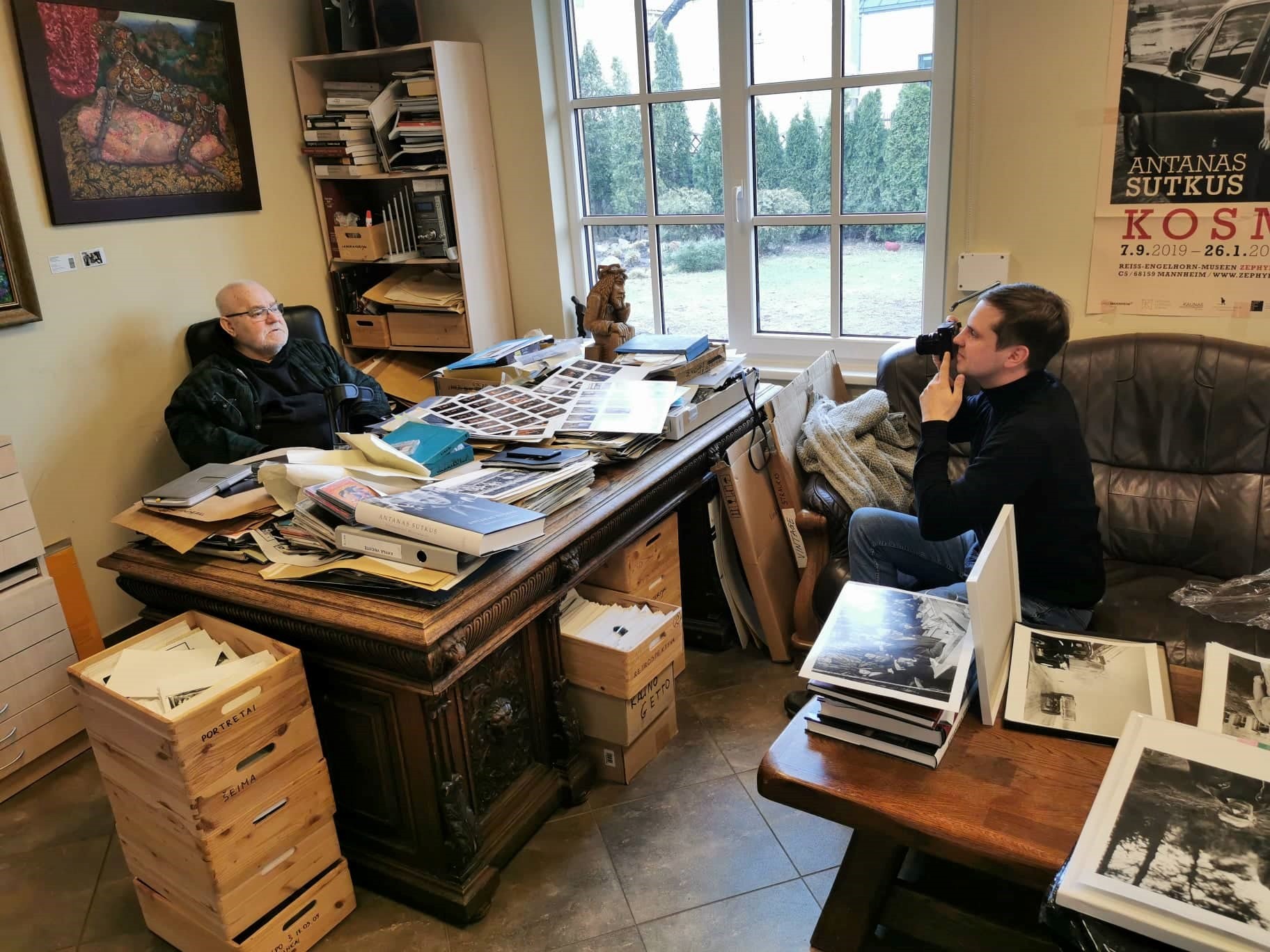Showing the Human Face Behind Academic Titles: Portraits of VU Lecturers by Morozovas
 This May, Vilnius University (VU) presented an artistic project in the form of a portrait gallery of its lecturers, featuring works by the documentary Artūras Morozovas in close cooperation with the Lithuanian photography legend Antanas Sutkus, whom Morozovas calls his teacher.
This May, Vilnius University (VU) presented an artistic project in the form of a portrait gallery of its lecturers, featuring works by the documentary Artūras Morozovas in close cooperation with the Lithuanian photography legend Antanas Sutkus, whom Morozovas calls his teacher.
Morozovas has documented military conflicts in the Caucasus, Palestine, and Ukraine, with his works appearing in the world’s top publications such as The Guardian, Der Spiegel, and others. Accepting the offer to photograph VU lecturers was an easy decision, he admits. "I took on this task with seriousness and a sense of responsibility, because I understand the importance of history and the University as an institution. All these people form the foundations of our country by not only contributing to the progress of science but also nurturing future generations. I see it as a privilege, this opportunity to capture a dozen or so University lecturers, to create photographs that, I would hope, will have a lasting value," he says.
Photographing people, not academic titles
Having spent a month capturing fifteen VU lecturers and the rector, Morozovas calls this active period of meetings a learning experience, which shed a new light on photographing human subjects and demonstrated the importance of conversations. He has also learned more about the University itself: "Walking on Universiteto street, I would often tilt my head up to look at the facades of the central campus or admire its Renaissance courtyards. However, I had never really thought about the historical depth, the architectural width, and the thematic variety of the University. I’ve experienced all of this during my interactions with the lecturers."
In his photos, Morozovas sought to capture VU scholars as they really are, as their natural selves. According to him, it was important for these photos to show the human face of the lecturers, which is often obscured in the public eye by their achievements, academic titles, or scientific research.

These intense photoshoots involved multiple meetings with the lecturers. According to the photographer, some were less self-conscious in front of his camera than others, paying less attention to it than those to whom this was a rather new and unusual experience. "My background is in documentary photography, and I don’t know how to direct, I don’t have any tricks up my sleeve. Nor do I find make-believe snapshots very convincing. So, in this case, I took photos during my conversations with them, trying to settle on an interesting topic and be a worthy conversation partner myself."
Morozovas asked himself in what situations human subjects are their true selves without the camera competing with the conversation – a question he also posed to Sutkus.
"I liked Antanas’s idea of getting them interested in the topic, which relaxes people and lets them be who they are. And it really worked. When I ask someone to look at he camera, they feel a bit awkward, become tense, start to wonder how they look, where to keep their hands, etc. When, on the other hand, the person is engaged in a conversation and talks of their current interests, I see a spark in their eyes, natural hand gestures, and genuine emotions. It was interesting to see how a topic can make one feel at home, providing a space in which we’re comfortable being our true selves and feel completely at ease," Morozovas says.
Most compelling images coming from moments of contemplation
VU lecturers were being photographed while engaged in conversations on their areas of expertise and other important issues. This is why Morozovas needed to do quite a bit of homework before each photographic encounter, he admits. The topics ranged from current affairs in Lithuania or across the globe and personal hobbies to history, chemistry, physics, or laser technology.
"I’d been a bit anxious whether I would be able to maintain a conversation and come up with questions. I wasn’t quite as concerned about humanities lecturers, but how do you maintain an engaging conversation at the Life Sciences Centre or the Laser Research Centre? However, I am really happy with every meeting I had. They were all very rewarding; I’ve learned new things and gained a new perspective on others. I really hope that the time the lecturers spent with me wasn’t too much of a bother for them, too," he says.
Morozovas says he saw many beautiful moments when looking through the camera viewfinder. The most moving of those moments were captured exactly during the extended conversations, with the lecturer passionately responding to the question they were asked or pausing to think things through.
"I captured Mažvydas Jastramskis, for example, exactly in such a moment of contemplation. I photographed him when he stopped for a moment in the passageway to the Grand Courtyard. I wondered why I find this image so compelling. Perhaps this is because we don’t often see photos of people deep in thought in the public media, "Morozovas reasons.
He admits that this method of documentary photography, involving as it does close encounters with the subject while taking care not to invade their personal space or tell them what to do, can cause a fair bit of anxiety, because there’s always a risk that nothing will come from it. Nonetheless, many of the portraits were done on a first a attempt.
What’s special about the teacher-student relationship?
What makes the portraits of VU lecturers so compelling is exactly this perspective of the photographer as a conversation partner. Looking at the portraits of lecturers deep in thought or relaxing, the viewer feels as if they’re present in the conversation themselves. The faces in the photos appear to invite the viewer to ask them just about anything.
Morozovas recalls Prof. Mikas Vengris’s interactions with his students at the Laser Research Centre. In the lab, everyone was equal, focused on the same task, reasoning, and making mistakes. Their interactions were lightened with occasional jokes, whether coming from some student or the professor.


"We’ve all experienced varying kinds of relationships to our teachers. Whether at school or a university. What comes to mind when is say the word “Teacher,” is a teacher whose role is not limited to sharing their knowledge of their subject of expertise. What matters a great deal in this relationship is also the human interaction, the ability to see the other person, to support them, to get them interested in the subject. This relationship should be founded on mutual respect. This is how you slowly begin to have people you look up to in life," Morozovas says.
Learning from Sutkus
Despite many years spent doing photography and a bit of experience making portraits, Morozovas admits that these intense photoshoots of VU lecturers prompted some new questions, which he discussed with his teacher Sutkus.
 "Antanas Sutukus has a very rich experience [in the field of portrait-making], so he’s able to quickly grasp the exact question I’m struggling with and, usually, give an answer or share advice. No matter if it’s a personal or a professional matter. This is why I look up to him. He not only shares his knowledge about photography but also teaches you how to be a photographer and, in general, how to look at humankind, relationships, belonging to a family, or values. This is how I understand a figure of authority – as someone who shows you the way, someone you can trust and feel welcome in their company," Morozovas says.
"Antanas Sutukus has a very rich experience [in the field of portrait-making], so he’s able to quickly grasp the exact question I’m struggling with and, usually, give an answer or share advice. No matter if it’s a personal or a professional matter. This is why I look up to him. He not only shares his knowledge about photography but also teaches you how to be a photographer and, in general, how to look at humankind, relationships, belonging to a family, or values. This is how I understand a figure of authority – as someone who shows you the way, someone you can trust and feel welcome in their company," Morozovas says.
By working together on this artistic project on behalf of VU, the photographers created compelling lecturers’ portraits that blend simplicity, naturalness, warmth, and contemplation. According to Morozovas, photographing these subjects was easy, as they are all passionate about what they do and extremely lively people in general.
"As a journalist, I always try to make the academic community more visible to the general public, to make their ideas and comments heard. I do hope that this brief look through the lens of the camera will draw even more welcome attention to this community," Morozovas concludes.